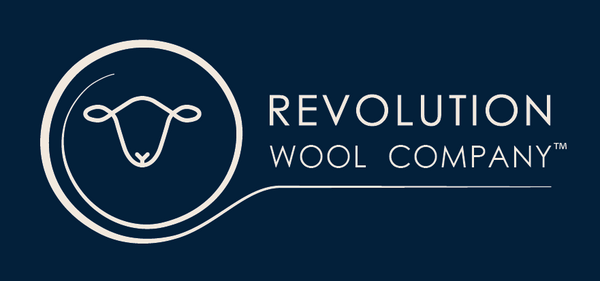When you hear the word wool, what's the first thing that comes to your mind? That it grows on sheep? A big ball of yarn? That itchy sweater your grandma made you for Christmas that your mom forced you to wear? Well, wool is actually so much more than that, especially the natural (not synthetic) wool you get from Revolution Wool Company.
Switching to wool products has many incredible health benefits for you and your family. But have you ever wondered why or how? Well, it's because wool is an amazing, unique, natural fibre with an incredible physical structure. Something that synthetic fibres and materials just doesn't have. Learning more about the structure and properties of natural wool fibre will help you understand why it's so amazing!
Wool has a chemical composition where the protein is made up of amino acids and acidic carboxyl groups. Without getting too scientific, this is what gives wool its flexibility, elasticity, and resilience. It's also responsible for the wool's ability to recover from wrinkles and allows it to absorb moisture very well. This chemical composition of the wool has evolved over millions of years to best protect sheep from the extreme heat and cold that our weather brings.
The interior of the wool fibre is made up of several different layers that work together to give wool its magical properties of flexibility, elasticity, and resilience, making it durable and long-lasting. It also makes wool absorbent, moisture-wicking, fire-resistant, and anti-static.
The outer surface of wool is made up of many overlapping cuticles, like shingles on a house. The way these cuticles fall into and overlap with one another is what prevents dirt and dust from reaching the skin. Lanolin is a waxy coating that is produced around each of these cuticles. It inhibits the growth of bacteria and protects the sheep's skin from infection. When we shear the sheep, the raw wool gets washed, which takes out excess lanolin. However, we leave some lanolin in the wool so we can still benefit from its fantastic anti-microbial and anti-bacterial properties.
Wool is a unique fibre, but it's crucial to source natural wool and wool products. You will not get the same benefits from synthetic wool. So if you're looking to make the switch to natural, high-quality wool products, visit www.revolutionwoolco.com and make the switch today!

